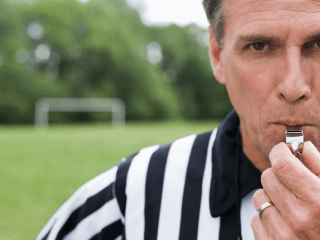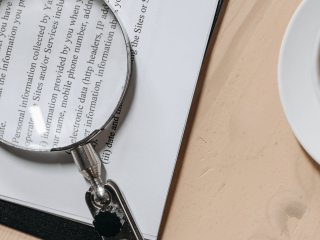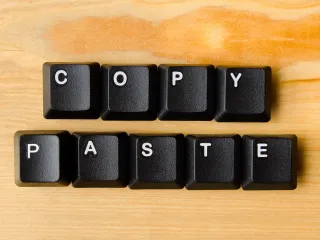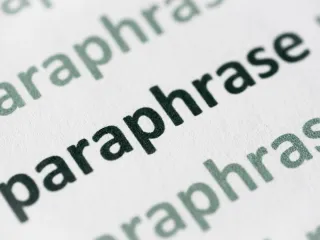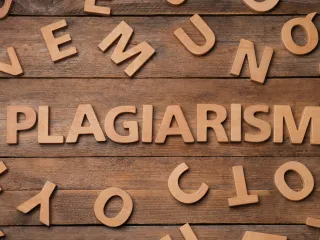How to Cite a Meme or GIF: APA, MLA, and Chicago Style
Whether they feature success kid, grumpy cat, or evil Kermit, memes and gifs communicate a vast amount of information through a single digital image. Because of their lighthearted intention and use, it is likely you have never thought to cite one before. However, the increasing presence of digital images in academic writing has made knowing how to cite a meme or gif a necessary skill.
These everyday digital images from social media can help provide evidence or perspective in your research papers, essays, and projects. Because the use of memes and gifs for academic writing continues to rise, you should know how to cite a meme or gif for future use in a class.
This article offers a clear and concise citation guide so you can easily understand how to cite a meme or gif in APA, MLA, or Chicago style in your next essay, presentation, or project.
Regardless of the citation style you are using, citing a meme or gif requires the following information:
- Title of the meme or gif or short description if it doesn’t have an official title
- The year the meme or gif was published
- The URL of the website
- Date published
- Publisher of the website
Citing a Meme in APA Style
The structure for both the APA style in-text citation and works cited structure for a meme or gif looks very similar to citations for digital images, because that is essentially what they are. This section explains all you need to know when using the 7th edition of APA citation structure.
The works cited structure in APA format for a meme or gif must follow this template:
Title of meme [Digital image]. (Year published). Retrieved from URL
The title of the meme, the year published, and the URL will change based on your specific digital image. But the phrases “digital image” and “Retrieved from” will stay worded exactly the same in each citation. For example, if you wanted to use the success kid meme, and you found it on the website Know Your Meme, then the proper APA structure looks like this:
Success Kid [Digital Image]. (2007). Retrieved from https://knowyourmeme.com/memes/success-kid-i-hate-sandcastles
Citing a gif works the same way as citing a meme in APA style, regardless of the image type. If you wanted to use a gif about getting excited for the weekend, your works cited entry for the gif would look like this:
Friday Reaction GIF by The Office [Digital Image]. (2020). Retrieved from https://giphy.com/gifs/LXfpI3nNbfCm91llsA
Normally, an in-text citation in APA style requires an author or creator’s last name, but for a meme or gif, you use the publisher of the website and follow this format:
(Website publisher, year)
If you mentioned the above examples in your text, you would cite them like this:
(Literally Media Ltd., 2007)
(Facebook, 2020)
Citing a Meme in MLA Style
The structure for citation in MLA format of a meme or gif is also similar to digital image citations, whether in-text or as works cited, and the MLA 8th edition dictates how to format these citations. To structure the works cited in MLA for a meme or gif, follow this template:
Title of meme or description. Name of the Website, Publisher of the website (only included if it’s different from the name of the website), Date published, URL.
Be sure to remove the “http://” or “https://” from the URL and always italicize the name of the website. You need to include the title of the meme in quotation marks if the name is an official title. If you use a description, you don’t need the quotes. When cited in MLA style, the success kid meme would look like this:
Success Kid. Know Your Meme, Literally Media, Ltd., 2007, knowyourmeme.com/memes/success-kid-i-hate-sandcastles.
The citation in-text follows this format:
(Website publisher, date)
An in-text citation for that meme looks like this:
(Literally Media, Ltd., 2007)
Citing a Meme in Chicago Style
If you need to know how to cite a meme or gif in the Chicago style format, follow this for works cited:
Title of Meme. Digital image. Title of Website. Date published. URL.
An example of the actual citation looks like this:
Success Kid. Digital image. Know Your Meme. 2007. http://knowyourmeme.com/memes/success-kid-i-hate-sandcastles.
The citation in-text follows this format:
(Website publisher, date)
Therefore the citation in-text looks like this:
(Literally Media, Ltd., 2007)
Still Unsure? Try Our Citation Generator
If you still feel nervous about how to cite a meme or gif, Quetext has an easy-to-use citation generator as well as other writing tools to ensure you properly accredit the original creator of all your resources and information. You can write confidently by accessing tools on the Quetext site to easily improve your writing, gain confidence in your skills, strengthen the credibility of your writing, and ensure your work has accurate citations and no duplicated text.
Quetext offers a plagiarism checker that helps teachers and students verify original work. Quetext employs the best plagiarism algorithm available in the industry to easily detect plagiarism, and identifying for students when to use a citation. If it looks like you have some questionable content, Quetext can provide clarity to resolve the issues. Even if the text was duplicated by accident, Quetext offers real-time feedback so students can understand how to strengthen their work and learn important lessons for future writing.
Quetext empowers students to be confident writers when using the citation generator. The citation generator automatically provides an accurate and correct citation in APA, MLA, or Chicago style formats for any type of content, including memes and gifs.
Citations can challenge many students, and some often don’t realize they need citations, especially if they paraphrase text. Quetext easily takes the guesswork out of identifying when you need citations and takes the guesswork out of properly creating them with it’s citation generator.


